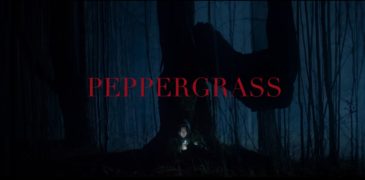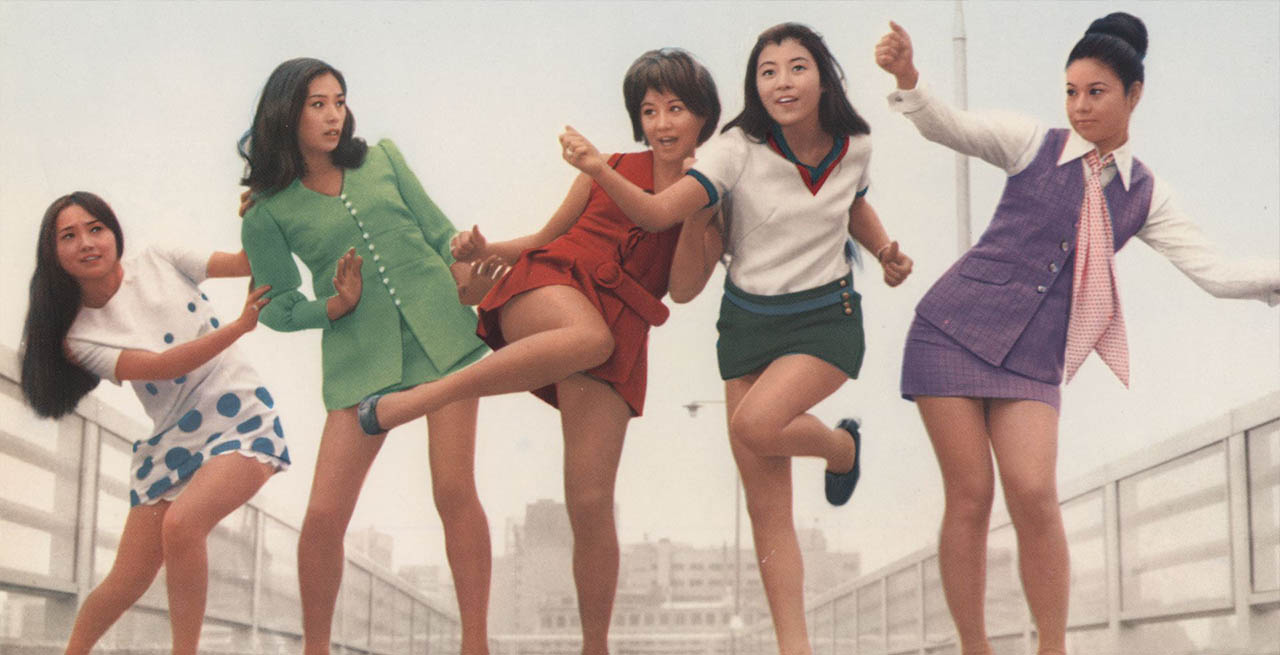
Nowadays manga adaptations are commonplace, and often fairly inevitable – however, this wasn’t always the case. Prior to the 1970s, adaptations of manga were a rare sight, especially live-action ones. In 1969, predated by just two other live-action adult manga adaptations (Ko Kojima’s Sennin Buraku & Teruo Tanaka’s Crimson Bat), Daiei would take a step into the unknown by adapting Tetsuro Mori’s adult gag manga Dump, Hip, Bump. Serialised in Weekly Myojo magazine, interestingly there was a brief time in 1969 in which Dump, Hip, Bump was published in the same issues alongside the pinky violence manga Konketsuji Rika.
The titular Dump, Hip, and Bump are a trio of independent single women who have united themselves under the banner of martial arts to teach all the dodgy men in the world a lesson. Each of their names describes both their character and fighting style: Dump (Yukiko Tsuyama) is the dumpy one who dumps her opponents on the floor and provides the bulk of the trio’s brawn; Hip (Yoko Namikawa) is the hip one who bashes her opponents with her hips and is the brains of the operation; and Bump (Mari Atsumi) is the vampish one who bumps into her opponents as hard as possible and uses her sexiness to manipulate their male targets (her original Japanese name “Banpu” can be used to spell both bump or vamp). After a series of wild events leads to the trios’ formation, their first encounter is with a pervert who has sneaked into their dojo HQ and tries to peek inside the girls’ duvets as they sleep. Dump is awoken, and the team wastes no time in beating and dominating their opponent.
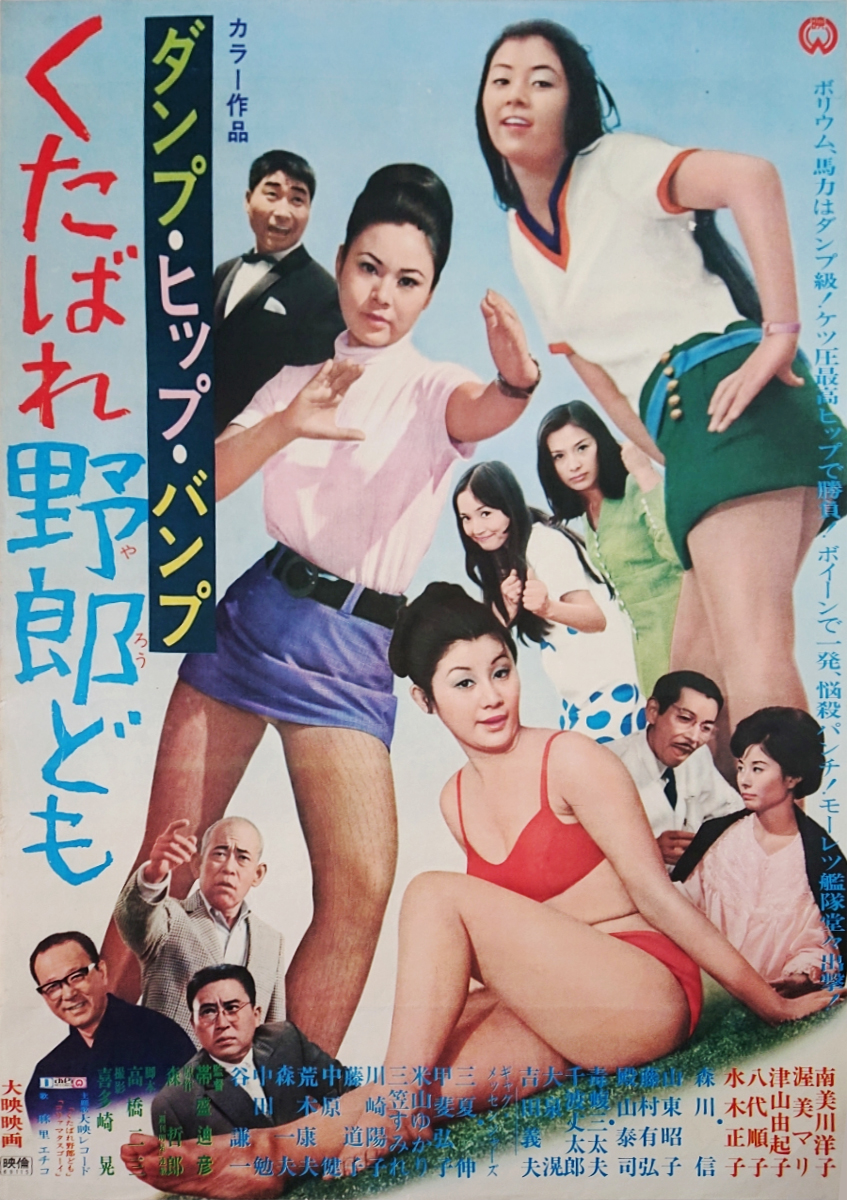
After getting caught up in a Zengakuren riot, the trio are hauled into a police station mistaken as being fellow radical left-wing revolutionaries. After proving their innocence, they catch the eye of Masako Sakamoto (Akiko Santo) who happens to be hanging around the station. She is the head of the local women’s-lib movement and recruits the girls after taking note of their unique, and highly violent, talents. She tasks them with taking down the “Dreamland Centre” – a multi-story den of iniquity supposedly responsible for corrupting the public’s morals and disempowering women. The centre is home to a soapland sauna and massage parlour, a haunted house-themed bar, and a gentlemen’s club. It is up to Dump, Hip, and Bump to infiltrate the sinful organisation and bring it down from the inside – all with varying degrees of success and hilarity.
After not only failing to take down the Dreamland Centre, but unwittingly making it more popular and successful than ever, the trio instead turned their attention directly to Mori (Makoto Morikawa), the company’s president. In hopes of digging up some personal dirt on him, they sneak around the back of his house, but to their shock, they see through the window that the hypocritical Sakamoto is having a sordid affair with Mori. As they turn to make their escape, they are discovered by Mori’s teenage daughter, Top (Junko Yashiro). Top admits that she is tired of her father’s sleazy ways and agrees to team up with Dump, Hip, and Bump, hoping that her disappearance will provide the necessary leverage that the girls need over Mori and the Dreamland Centre. Mori hires a bunch of yakuza goons to find and return his daughter, but they are no match for the highly disciplined Dump, Hip and Bump, who singlehandedly defeat the thugs. After gaining victory over Mori, the Dreamland Centre was rejuvenated and turned it into a family-friendly music venue.

When it comes to making a live-action adaptation of any manga or comic, the first hurdle is often realism: to what degree does the source material transfer to the real world, and to what extent do you need to compromise on accuracy to make the adaptation work? In the case of Dump, Hip, Bump: Give it to Me Guys! director Mihiko Obimori goes all-in on recreating the original manga’s scatterbrained tone to create a truly wacky jape. This tone extends to the film’s cast who, with their exaggerated movements and hyperactive speech, very much resemble real-life cartoon characters.
In the late 1960s, Daiei was starting to focus on raunchy youth comedies which led to the formation of the so-called “shameless group”. The shameless group consisted of five young actresses – Yoko Namikawa, Mari Atsumi, Junko Yashiro, Masako Mizuki, and Yukiko Tsuyama – who would form a regular cast for these highly popular films. Dump, Hip, Bump featuring all 5 members of the group was regarded as one of the high points of the short-lived shameless group era. With Yoko Namikawa, Mari Atsumi and Yukiko Tsuyama’s previous experiences working together, their onscreen chemistry is absolutely off the charts, leaving the film effortlessly charming as a result. The three actresses fully commit to their cartoonish roles with an infectious, bubbly energy; each bringing their own talents to truly make their characters burst from the screen.
Yukiko Tsuyama, despite being the least experienced of the group, bulldozes her way into the film, and much like her character would, thoroughly grabs the audience by the collar and shakes us into submission. Yoko Namikawa is impossibly cute and offers more understated comedy through her quirks and intelligence. Initially appearing as the most normal out of the three, she has a disarming wit and always delivers the unexpected after rubbing her finger on the tip of her nose as her wicked brain fires into action. Mari Atsumi of course needs no introduction, but Bump isn’t quite what you might expect of her. Despite being singled out as the sexy one, she is far from graceful and certainly isn’t ladylike. Whether the short-sighted bombshell is narrowly avoiding running you down in her out-of-control dune buggy or calling in a favour from her shady yakuza-connected family, it’s probably best to stay well away from her. Unbeknownst to her at the time, Mari Atsumi was just a few months away from becoming Japan’s #1 sex symbol of the early 70s, making her role in Dump, Hip, Bump all the more amusing in hindsight.
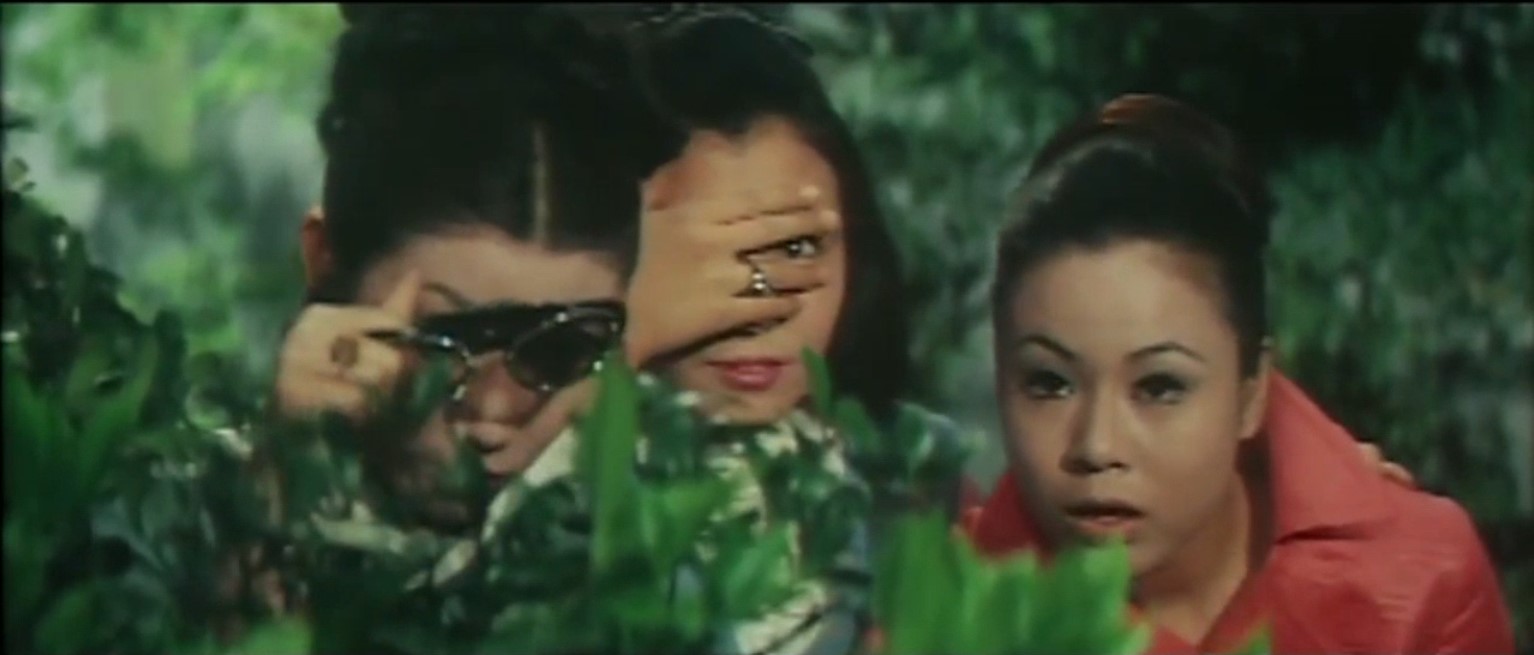
The biggest potential weakness of Dump, Hip, Bump is its story. Despite the original manga being longer than your typical 4 panel yonkoma, it is nonetheless very short-form and self-contained. It is no surprise that gag manga in general rarely receives feature-length adaptations for this very reason. However, if you can make two movies out of Garfield then I suppose anything is possible. With the film having the trio attempting to take down the Dreamland Centre one stage at a time, the story is split into bitesize sections, effectively presenting the comedy as a series of connected skits. Each of these skits could easily be its own chapter of manga, so stays true to the original gag format whilst also working in the context of a feature-length film.
I have to admit I’m not usually a fan of Japanese comedy films; certainly, there’s a cultural aspect inherent in comedy that doesn’t always translate very well, but even then, I just find most Japanese comedies to be overly farcical and one-note. Dump, Hip Bump, despite being fairly ridiculous as a whole, perfectly balances its farce with slapstick and satire, and regularly changes up its formula before the jokes become too stale. The main strength of both the film and the original manga comes via its three protagonists. Instead of focusing on a single character archetype, the three women allow a range of tropes and jokes to be explored which keeps the humour fresh and unpredictable. Dump, Hip and Bump all have their own ways of dealing with a situation, so a lot of enjoyment comes from trying to predict what hare-brained scheme the girls will cook up next.
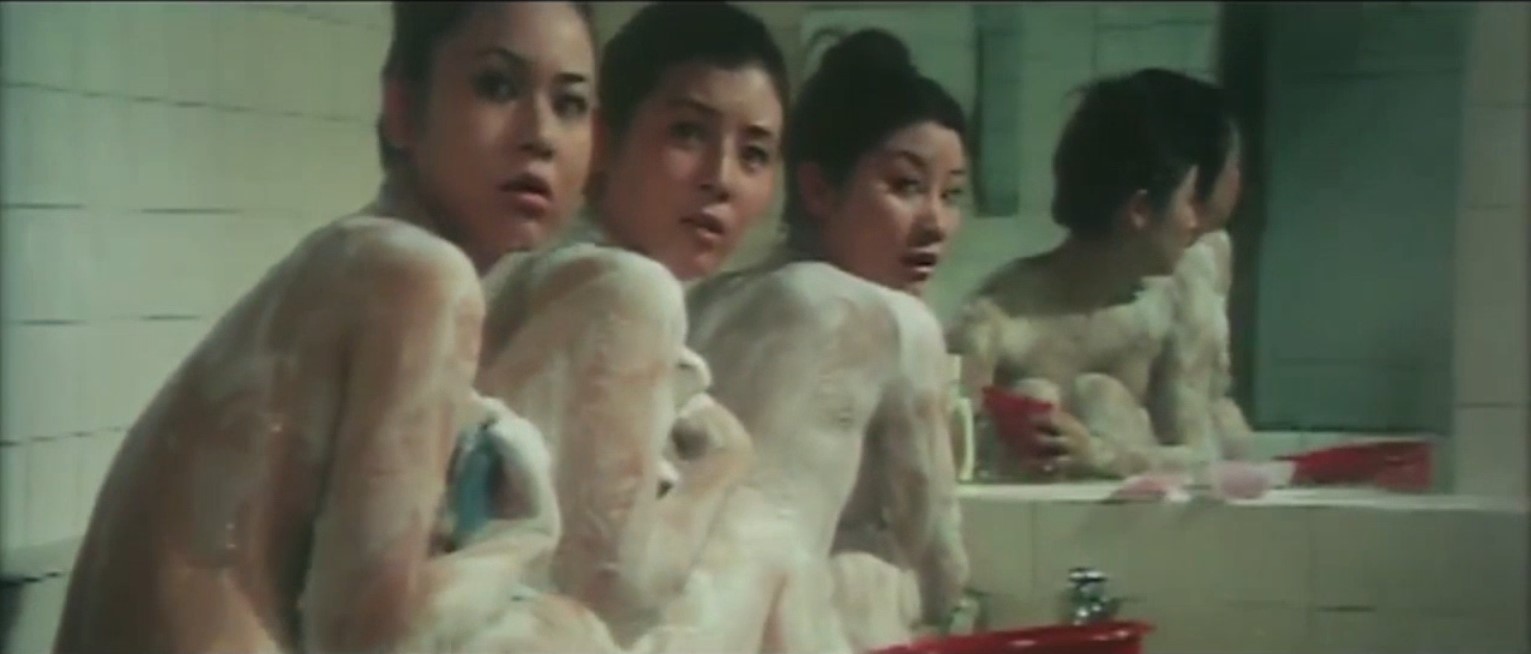
Overall Dump, Hip, Bump: Give it to Me Guys! is an odd, yet undeniably endearing rollercoaster ride. A lot of the time, the story admittedly feels fairly lightweight and too random for its own good, though, in a film as weird and wacky as Dump, Hip, Bump, the characters were always going to come first. With a manic pace, befitting of its cartoonish protagonists, the film brilliantly captures the tone of the original manga, and ensures a constant stream of jokes and comedy for the audience. Behind the thin story and onslaught of hilarity, the film nevertheless delivers a surprisingly succinct commentary on gender politics in the Showa 40s and stays true to its feminist message – even if the protagonists are a bit dopey.
When it was released, there was no formula for what a live-action manga adaptation should look like. Dump, Hip, Bump had to cut its own path resulting in an experimental film, which even nowadays, feels fresh and unique in comparison to other manga adaptations. With the exception of the animated Do It! Yasuji’s Pornorama from 1971, there really hasn’t been any attempt to make a feature-length adaptation of a gag manga since Dump, Hip, Bump.
More Film Reviews
It is hard to know where to begin when discussing the epic that is Labyrinth of Cinema, the final directorial feature of Nobuhiko Obayashi. Perhaps it is best to start… A mockumentary framing offers a nice spin to the found footage genre. While most found footage films are shot and arranged in an amateur fashion to preserve their realism and… Ever since I was a small child, I have had a fascination with monster movies. They bring back nostalgic memories of sitting for hours on end, watching black and white… Fuk’n Nuts is a 2023 American surrealist horror comedy short film, written and directed by Sam Fox. No stranger to the medium, Fox is known as the writer/director of the… When it comes to lost media, there are a variety of reasons as to how the media came to be missing in the first place. But, by far the most… In the middle of a pandemic, times are hard for Eula Baek and the restaurant she inherited from her grandfather. A plan to get some rare truffles to help raise…Labyrinth of Cinema (2019) Film Review – Celebrating the Magic and Power of Movies
Occult (2009) Film Review – Mysteries, Miracles, Massacres
Spookies (1985) Film Review: These Spooks Were Made for Walkin’
Fuk’n Nuts (2023) Film Review – Caution! May Contain Crazy [Fantastic Fest]
Effects (1979) Film Review – The Snuff Of Legends
Peppergrass (2021) Film Review – Truffles To Die For

Hi, I have a borderline obsession with Japanese showa-era culture with much of my free time spent either consuming or researching said culture. Apparently I’m now writing about it as well to share all the useless knowledge I have acquired after countless hours surfing the web and peeling through books and magazines.

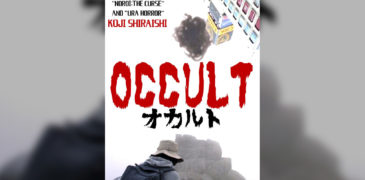

![Fuk’n Nuts (2023) Film Review – Caution! May Contain Crazy [Fantastic Fest]](https://www.grimoireofhorror.com/wp-content/uploads/2023/09/Fukn-Nuts-cover-365x180.jpg)

